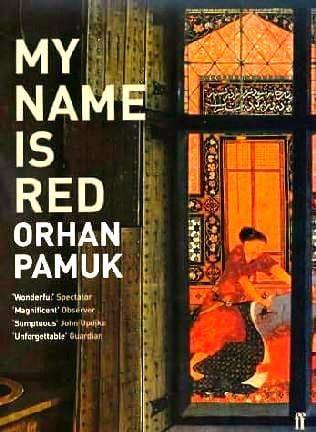
When a novel begins with the line “I am nothing but a corpse, a body at the bottom of a well”, you know you’re in for something special.
While the writing in one of Pamuk’s most well known translated works (originally written in Turkish) isn’t as experimental as Danielewski’s “House of Leaves” or Palahniuk’s “Fight Club,” “My Name is Red” is a thoroughly engrossing novel that forces the reader to think and analyze what is written rather than simply reading it.
The novel begins in a style of metafiction popularized by many of Jorge Luis Borges’s shorts. The dead man introduced in the opening line is that of Elegent Effendi, a miniaturist to the Ottoman Sultan Murat III. Effendi speaks directly to the reader throughout most of the novel, noting important notions and concepts that are referenced later in the text.
While an understanding of philosophy, mythology and history will help, the novel only touches on each of these subjects much like an artist uses many different pastels in the painting of a piece. The novel revolves most intently on the nature of the novel itself, and often makes ironic references to other ancient books, both real and fictitious within an encircling plot of mystery, romance and intense debate.
However, Effendi is not the only character in this work of art. He is joined by many other miniaturists, artists, and villains. Pamuk follows their lives and interactions in the wake of Effendi’s murder over the course of nine wintry days in late 1591. This menagerie of miniaturists and characters slowly come to exemplify a very controversial question towards Islam — the nature of art.
The very nature of art is both questioned and mocked throughout the novel, as one character demonstrates that it is the sole ability of God to create art; portraiture is forbidden, she says, as it can become a “cult of idolatry” that conflicts with the grand perspective in God’s creation of the world as a whole. The idea is presented later, that if one were to see God in all of natural creation, and one were to create art that represents nature, one competes against God in creation.
Perspective in this debate of art is also mocked on a literary scale, as the immortality of the work of art is questioned as well. In the opening chapter, and elsewhere in the novel, Effendi and other characters question the reader directly with questions. Effendi notes that by writing from his place in the afterlife, he has become immortal even if there is no afterlife, for the reader may be reading in any time or place in all the worlds of history.
“My Name is Red” is a novel that truly makes you think. Even before the last page is turned and the spell is broken, the questions Pamuk’s character’s ask linger on the mind. The cultural and religious conflicts presented within the novel echo even to today, and the ideas and concepts spoken of bear weight even today. Can one atain immortality through art? If so, then I thank you, reader, for giving me mine.


